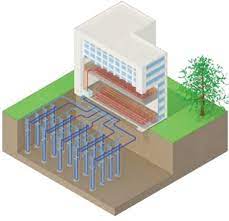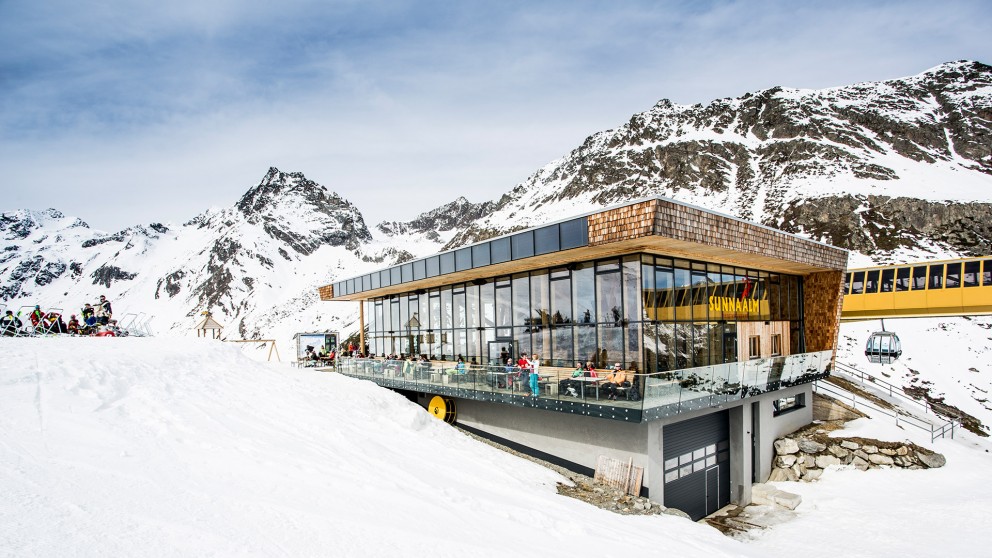Renewables turn Sunna Alm into the highest passive-energy restaurant of the Austrian Alps
Sunna Alm is a mountain restaurant located in Pitztal, Austria. The restaurant is opened two thirds of the year and has opted for renewable energy to heat its building. Thanks to a combined used of solar and geothermal energies, it is the highest passive-energy restaurant of the Alpine region.
Using ground and solar energy in the mountains
The Sunna Alm restaurant was built in 2008 near the Rifflsee mountain station and is located at 2291 metres above sea level. Here, the annual average temperature is 1°C. Owners of the Sunna Alm restaurant need to maintain a constant and comfortable temperature of 20°C inside the restaurant during the 135 open days in winter and 100 in summer. Overall, the restaurant has a surface to be acclimatised of about 560 m².
To reduce the restaurant’s energy emissions and make it a carbon neutral building, since 2008 the restaurant uses renewable energies to heat the place. Seven deep drilling were conducted up to 120 metres-depth adjacent to the building.
Borehole drilling is generally used for geothermal energy supply by using the heat from the ground. Yet, in this rocky and high area, underground temperatures are negative (-3°C), the efficiency of the geothermal wells is very low. Thus, to enhance the energy production, 34m² of solar panels were also installed on the top of the restaurant’s roof. The excess heat provided by solar panels is stored in the field of borehole heat exchangers. This technique of Underground Thermal Energy Storage aims at storing excess heat in the ground in summer and retrieve it in winter.
The combination of geothermal and solar energy thus gives to the energy installation both a heating and a storage function. The installation therefore provides heating to the restaurant as well as hot water. These installations do not cover the restaurant’s electricity needs, for lighting or kitchen equipment for example. In terms of electricity supply, the building is attached to the cable car of the mountain station; thus, its demand for electrical energy cannot be counted separately.

Results and transferability
The combination of solar and geothermal energy at the Sunna Alm restaurant makes the restaurant a 100% carbon neutral building in terms of heating energy. The primary energy consumption is reduced by 100%; likewise, 100% of energy-related carbon emissions are avoided. Given the annual 235 open days, the system enables a saving of 35.000 litres of fuel oil each year.
Thanks to the combined installation, the final energy efficiency rating of the building amounts 12 kWh/m². This figure demonstrates how energy efficient the Sunna Alm restaurant is, in comparison with the average rate in Austria of 190 kWh/m². The energy efforts are also noteworthy knowing that, in the European Union, service building are on average 60% more energy intensive than residential buildings (see H2020 ODYSEE-MURE policy brief).
The combined installation chosen by Sunna Alm is transferable to other infrastructures in the mountains – at least in the Alps, as demonstrated by the Interreg Alpine Space GRETA project (Near-surface Geothermal Resources in the Territory of the Alpine Space). Indeed, borehole heat exchangers (BHEs) are suitable both for independent housing and large buildings. Moreover, BHEs are not dependent on the presence of groundwater and can therefore be installed in any environment. However, drilling costs are high and make geothermal energy expensive. In the case of the Sunna Alm restaurant, installation costs and amortization strategy are unknown, and owners rather valorised their motivation for innovation and ecology. Annually, maintenance costs of these installations amount about 500 euros.
